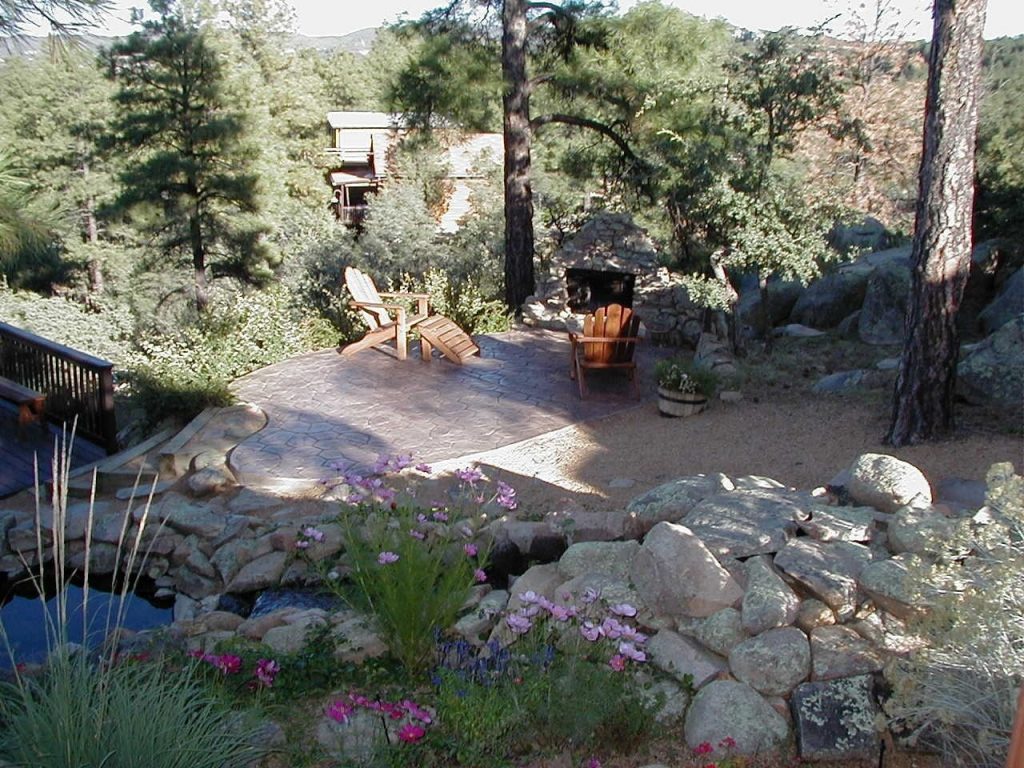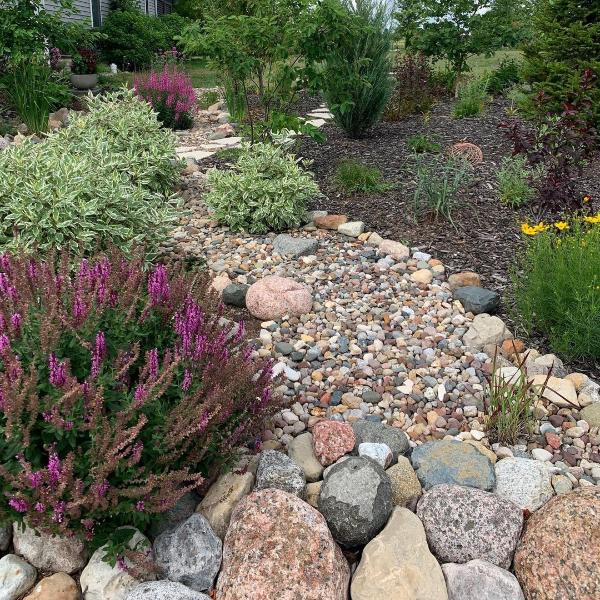Everything about Hilton Head Landscapes
Table of ContentsThe Definitive Guide to Hilton Head LandscapesThe 6-Minute Rule for Hilton Head Landscapes8 Easy Facts About Hilton Head Landscapes DescribedThe Greatest Guide To Hilton Head LandscapesSome Known Factual Statements About Hilton Head Landscapes Some Of Hilton Head LandscapesOur Hilton Head Landscapes PDFsThe Only Guide to Hilton Head Landscapes
Kind compatibility is additionally a major element of unity in designone or more noticeably different forms benefit comparison and emphasis, yet typically all other types ought to have some resemblances for an unified appearance. Appearance describes just how coarse or fine the surface area of the plant or hardscape material really feels and/or looks.
Examples of plants with coarse texture consist of philodendrons, agaves, bromeliads, hollies, hands, and hydrangeas. Hardscape with coarse appearance consists of rough-cut rock, rough-finished block, and incomplete wood with knots and an elevated grain. Matured or old construction product that preserves a weather-beaten surface is usually crude in texture. Characteristics that develop fine appearance include little vegetation; thin, strappy fallen leaves (grasses) or tall, slim stems; small, thick branches and small branches; long stems (creeping plants); and tiny, delicate flowers.
The Greatest Guide To Hilton Head Landscapes
Many plants are average texture, because they can not be referred to as having either coarse or fine structure. They are defined by medium-sized leaves with simple forms and smooth sides. The average-sized branches are not largely spaced nor commonly spaced, and the general kind is generally rounded or mounding. Medium-textured plants function as a background to link and merge the rugged- and fine-textured plants.

To make a space feel smaller, put the coarse structures along the external border and the great structures closest to the customer. The information of the coarse structure makes the plants appear closer and makes the room really feel smaller. The perceived structure of plants can also transform with the range from the plant.
The 10-Second Trick For Hilton Head Landscapes
Vibrant shades boost the contrast and make the texture appear coarser, while low-key shades can squash texture. Hardscape with a coarse texturesuch as really harsh rocks and vibrant, large timberstends to make all plant material show up more medium distinctive. Developers frequently develop a structure research (Number 8) theoretically to aid make a decision the setup of plant materials.
Figure 8. Texture study. Shade in plant product and hardscape includes rate of interest and selection to the landscape. Shade is the most noticeable aspect in the landscape and is normally the emphasis of the majority of home owners; however, it is likewise the most temporary aspect, usually lasting just a couple of weeks a year for private plants.
The 3-Minute Rule for Hilton Head Landscapes
An easy summary of the shade wheel consists of the three main shades of red, blue, and yellow; the 3 secondary shades (a mix of two primaries) of green, orange, and violet; and 6 tertiary colors (a mix of one nearby main and second shade), such as red-orange. Shade theory clarifies the partnership of colors to each various other and just how they must be utilized in a structure.

Similar (in some cases called unified) color design are any kind of three to 5 colors that are surrounding on the shade wheel, such as red, red-orange, orange, yellow-orange, and yellow, or blue, blue-violet, and violet (bluffton landscaping). The shades belong to every other because they usually include 2 primary shades mixed to create a second and 2 tertiary shades, which indicates they share typical residential properties
Complementary shades are frequently discovered normally in flowers; an usual set is yellow and violet. Color is discovered in the flowers, vegetation, bark, and fruit of plants.
A Biased View of Hilton Head Landscapes
Eco-friendly vegetation in all its different shades is the dominant shade by quantity, yet various other colors record attention extra readily due to their high contrast to the color eco-friendly. Shade is also located in buildings, rocks, pavers, timber, and furnishings. Many shades in all-natural materials, such as stone and wood, are normally muted and have a tendency to be variants of brownish, tan, and pale yellow.
Shades have properties that can influence feelings, spatial understanding, light top quality, balance, and emphasis. Awesome colors often tend to be relaxing and need to be utilized in areas for leisure and tranquility.
The Main Principles Of Hilton Head Landscapes
The "temperature" of colors can likewise affect the perception of distance. Great colors often tend to decline and are regarded as being further away, making a space really feel larger. Warm colors often tend to advance and are viewed as being more detailed, making an area feel smaller. Shade can additionally be made use of to capture interest and direct views.
For instance, intense yellow, which has the highest strength, additionally has a high contrast with all various other colors (commonly called a "pop" of color) and ought to be conserved. A small amount of extreme shade has as much visual weight as a big quantity of a much more restrained or weak color.
Comparable (in some cases called unified) color design are any type of three to 5 colors that are surrounding on the shade wheel, such as red, red-orange, orange, yellow-orange, and yellow, or blue, blue-violet, and violet. The colors are associated to each various other since they typically include 2 primaries mixed to form an additional and two tertiary shades, which implies they share typical residential or commercial properties.
Getting The Hilton Head Landscapes To Work
Corresponding shades are commonly found normally in flowers; a common set is yellow and violet. Shade is found in the flowers, vegetation, bark, and fruit of plants.
Environment-friendly foliage in all its different shades is the dominant color by amount, but other shades capture focus much more easily as a result of their high comparison to the shade eco-friendly - hilton head landscapers - https://www.mixcloud.com/h1tnhdlndscps/. Color is likewise found in buildings, rocks, pavers, timber, and furniture. Many shades in all-natural materials, such as rock and wood, are typically muted and have a tendency to be variations of brown, tan, and light yellow
The Basic Principles Of Hilton Head Landscapes
Shade is an essential element for creating rate of interest and selection in the landscape. Colors have properties that can affect emotions, have a peek at this site spatial perception, light high quality, equilibrium, and focus. One residential or commercial property of shade is described about temperaturecolors seem awesome or warm and can affect feelings or sensations. Great colors often tend to be relaxing and must be utilized in locations for leisure and tranquility.
Great shades have a tendency to recede and are viewed as being further away, making an area feel larger. Shade can additionally be utilized to catch attention and straight views - https://4vgontca9bh.typeform.com/to/NcH3QMx6.
Brilliant yellow, which has the highest possible intensity, also has a high contrast with all various other shades (usually defined as a "pop" of shade) and need to be utilized sparingly. A small quantity of intense shade has as much visual weight as a large quantity of a much more subdued or weak color.